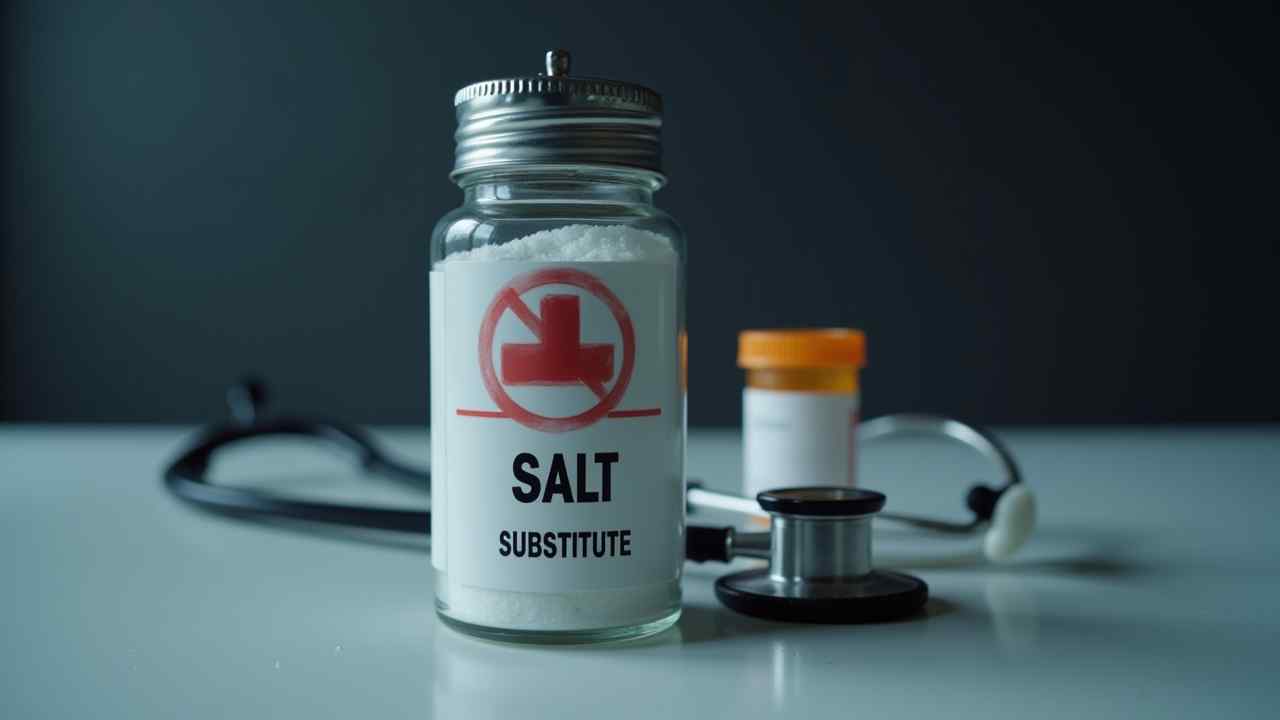
🧂 What is Low-Sodium Salt? A Guide to Salt Substitutes & Their Risks
🧂 What is Low-Sodium Salt? (A Guide to Salt Substitutes & Their Risks) 🧂
❗ CRITICAL HEALTH WARNING: Salt substitutes, or "low-sodium salts," are not safe for everyone. They can be extremely dangerous for people with kidney disease, heart conditions, or those taking certain medications. You MUST speak with your doctor before using any salt substitute.
For people trying to lower their blood pressure, cutting back on salt is key. This has led to the popularity of products labeled "low-sodium salt." They seem like a simple, healthy swap. However, they are a medical product with serious risks.
This guide will explain what these salt substitutes are. We will cover how they work and their potential benefits. Most importantly, we will detail the significant dangers they pose. This is information everyone should know. 🩺
🤔 How is Low-Sodium Salt Different from Regular Salt?
To understand the risks, you must first understand the ingredients. The difference between regular salt and a low-sodium salt is a chemical one. It is a simple but critical substitution.
Regular table salt is sodium chloride (NaCl). The "sodium" is the component that can raise blood pressure. It is what doctors advise patients to limit. It is the main source of salty flavor.
A low-sodium salt is a blend. It still contains some sodium chloride. But a large portion of it is replaced with potassium chloride (KCl). Some salt-free substitutes are made of 100% potassium chloride. This is the key to both its function and its danger.
⚠️ What Are the Serious Risks and Dangers of Low-Sodium Salt?
This is the most important section of this guide. While lowering sodium is good, increasing potassium can be very dangerous for many people. Your body needs a delicate balance of sodium and potassium to function correctly.
Why is Potassium Chloride a Major Concern?
Healthy kidneys are experts at filtering excess potassium from the blood. However, if your kidneys are not working at full capacity, this process fails. This can cause potassium to build up in your blood. This condition is called hyperkalemia.
Who is at High Risk?
Many people who are on a low-sodium diet are the exact people at risk. This is a dangerous overlap. High-risk groups include:
- People with Kidney Disease (CKD): Damaged kidneys cannot remove potassium. Using a salt substitute can quickly lead to toxic levels.
- People with Heart Failure (CHF): These individuals often have related kidney issues.
- People on Certain Medications: Common blood pressure drugs (like ACE inhibitors and ARBs) can cause the body to retain potassium. Combining these with a salt substitute is very risky.
What is Hyperkalemia?
Hyperkalemia (high potassium) is a medical emergency. It can cause muscle weakness or paralysis. Most dangerously, it can lead to life-threatening heart arrhythmias. It can even cause sudden cardiac arrest.
🌿 What Are Safer Alternatives for Reducing Sodium?
Given the risks, using a potassium-based low-sodium salt is not a simple choice. Thankfully, there are many completely safe ways to reduce sodium. These methods focus on adding flavor without chemical swaps.
Use Herbs and Spices: This is the number one safest alternative. A world of flavor is open to you. Use garlic powder (not salt!), onion powder, paprika, dill, and rosemary. These add amazing taste with zero sodium.
Use Citrus and Vinegar: A squeeze of fresh lemon or lime juice can brighten any dish. It mimics the sharp taste of salt. Vinegars like balsamic or red wine vinegar also add a flavorful kick. These are perfect for dressings and marinades.
The final verdict is clear. A low-sodium salt is a medical product. It should be treated with the same caution as a prescription drug. Never use one without your doctor's explicit approval. The safest path to a low-sodium life is through fresh foods, herbs, and spices. ❤️